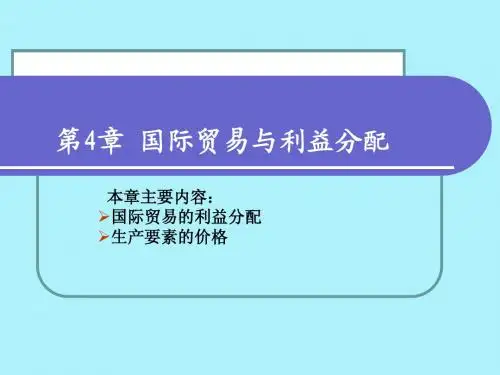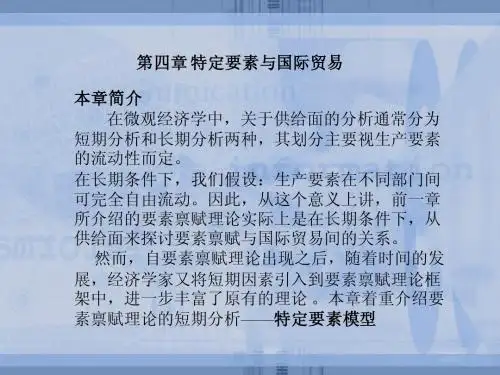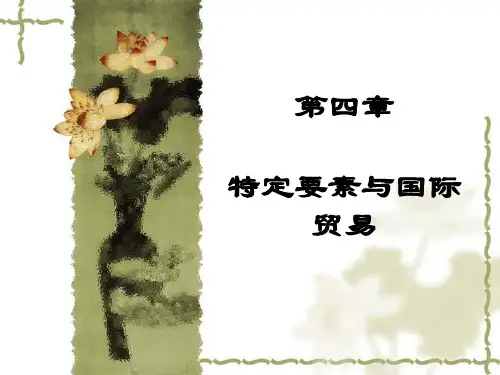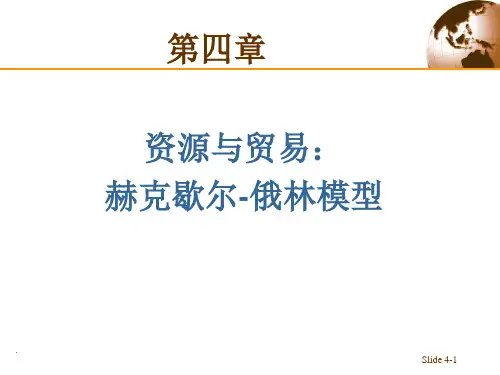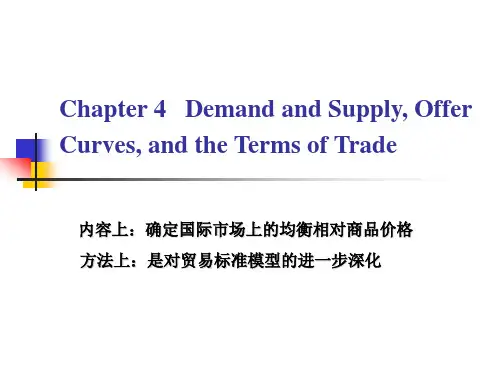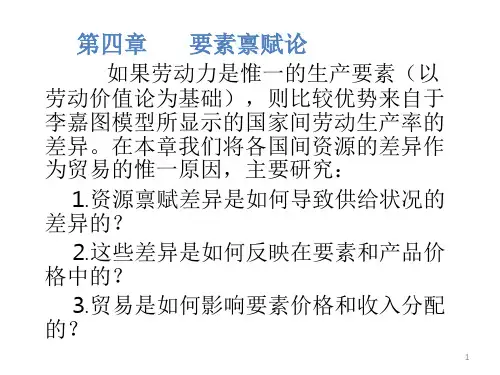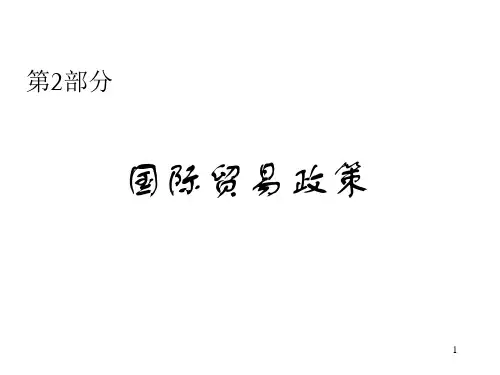– Relative factor abundance (refer to countries) – Relative factor intensity (refer to goods) – It also referred to as the factor-proportions theory
8
I.
12
4.3 The Formal Heckscher-Ohlin Model
Suppose there are two countries with identical technology and societal preferences. The nations differ in that one is relatively labor abundant (nation 1) while the other (nation 2) is relatively capital abundant. Further, the commodities produced differ in factor intensity. (X has the greater K/L ratio per unit of production, so X is the Lintensive product.)
2
4.1 Introduction
What determines comparative advantage? What effect dose international trade have on the earnings of various factors of production (distribution of income) in trading nations? Other trade theories, models beyond the standard model of international trade are considered.
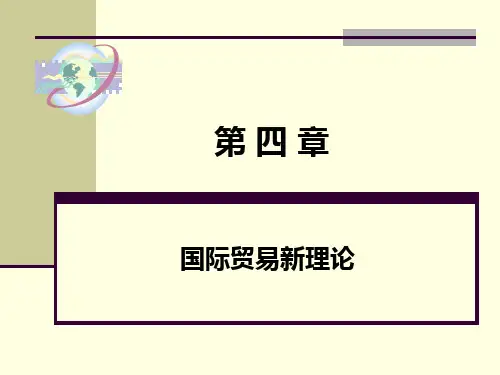
![国际经济学[4]PPT课件](https://uimg.taocdn.com/13c4590bce2f0066f433229c.webp)
